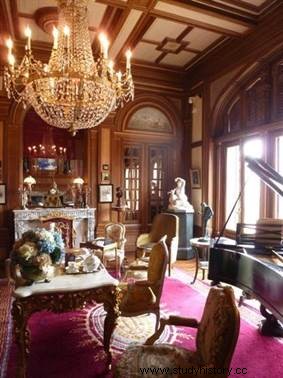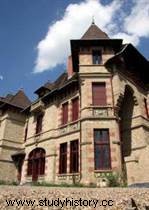 "Name of Zeus! you exclaim as you enter Maison Mantin , because here you are propelled more than a hundred years back, in 1905, in the house of a high official of the Third Republic who made the choice to end his life as a scholarly bourgeois surrounded by his collections in an atypical mansion on the banks of the l'Allier... In the historic heart of the town of Moulins , this house only reopened in 2010, revealing to the public a residence from another time, left as it is for the visitor, as its extravagant last occupant had wanted... An atypical and original visit which is essential for all curious and history buffs, the hardest part will be for you to return to the future.
"Name of Zeus! you exclaim as you enter Maison Mantin , because here you are propelled more than a hundred years back, in 1905, in the house of a high official of the Third Republic who made the choice to end his life as a scholarly bourgeois surrounded by his collections in an atypical mansion on the banks of the l'Allier... In the historic heart of the town of Moulins , this house only reopened in 2010, revealing to the public a residence from another time, left as it is for the visitor, as its extravagant last occupant had wanted... An atypical and original visit which is essential for all curious and history buffs, the hardest part will be for you to return to the future.
Louis Mantin
Louis Mantin (1851 – 1905) was a lawyer then a senior civil servant, sub-prefect in the Hautes-Alpes, Hérault, Nièvre and Haute-Vienne departments, he is considered by mutual agreement as a sociable and intelligent individual. When his parents died, he left the state administration to return to the family property, in Moulins, where his parents and grandparents had a house on the ruins of the former ducal palace of the Bourbons. The only son, heir to his parents and an uncle, he then led the life of an annuitant, a learned bourgeois on the banks of the Allier...
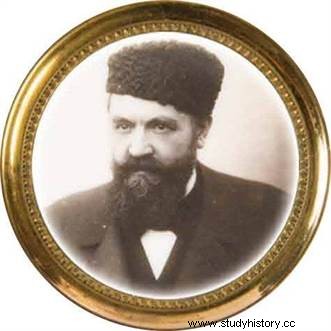 On this family plot, next to the cathedral and the famous Mal-Coiffé tower, he decided to 1894 to erect a villa and entrusts the realization to the architect René Moreau. Keeping the kitchens and dining room in the house of his grandparents, the villa therefore appears above all as a place to live, where he spent the last twenty years of his existence. But it is also and above all a setting, a setting for a formidable collection amassed by a civil servant who traveled throughout Europe and who, curious about his century, accumulated furniture, works of art and unusual objects from diverse and varied origins.
On this family plot, next to the cathedral and the famous Mal-Coiffé tower, he decided to 1894 to erect a villa and entrusts the realization to the architect René Moreau. Keeping the kitchens and dining room in the house of his grandparents, the villa therefore appears above all as a place to live, where he spent the last twenty years of his existence. But it is also and above all a setting, a setting for a formidable collection amassed by a civil servant who traveled throughout Europe and who, curious about his century, accumulated furniture, works of art and unusual objects from diverse and varied origins.
The bourgeois gentleman leads a semi-worldly and scholarly life, writing a few articles for the "Société d'Emulation du Bourbonnais" (of which he is vice-president), going to concerts given in the cathedral, and hiding within the walls of his villa the illegitimate relationship he has with Louise-Gabrielle Alaire, a married woman...
When he died in 1905, Louis Mantin left no direct heir, but a will that bequeathed all his property to several institutions:works of religious art for the cathedral , his library of 1,400 books for the Bar Association, and finally his home for the town of Moulins!
In doing so, he hopes that the jewel of his life will be visited in the future, perhaps for him to defy death:
"We must, as far as possible, especially in the new part, preserve the present appearance and distribution so as to show visitors in a hundred years a specimen of home of a bourgeois in the 19th century. » 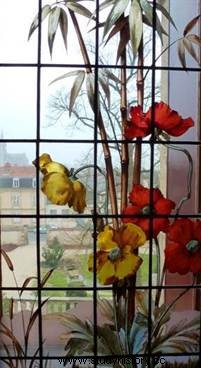
But, on the other hand, Louis Mantin forced the city to combine the two existing museums into one, placed in front of his house on the ruins of the ducal palace, a sine qua non for his legacy to be valid... Mantin thus killed two birds with one stone and initiated the creation of two of the main tourist centers of the city:the Anne de Beaujeu Museum inaugurated in 1910 and his own house.
Maison Mantin from 1905 to the present day
Contrary to popular belief, Maison Mantin was not completely closed during the hundred years that separates us from its last occupant... Indeed, the Maison is open open to the public until the interwar period, then, for conservation reasons, visits became increasingly confidential. It was finally necessary to wait for its acquisition in 2004 by the General Council of the Allier for the building to be restored and re-opened to the public.
Only a public administration could indeed have sufficient funds to finance this major project. Because the home of the local figure has suffered enormously from the pangs of time, water infiltration and a destructive fungus:dry rot. This is followed by a pharaonic project which will mobilize cohorts of craftsmen bringing all their know-how to restore the villa to its former glory:the woodwork is treated, the gilding, the furniture is restored, the hangings are redone to the same...
Follow the guide!
Visits to Maison Mantin are now by appointment, accompanied by a tour guide who invites you to discover each room of the house and is committed to answer all your questions. On this point, we would like to specify the quality of the visit, the HpT team having benefited from the service of a talented and pleasant guide, who perfectly masters his subject! Externally, Louis Mantin's villa takes on the air of a neo-Norman manor, a residence straddling the bourgeois house and the castle, for a romantic 19th century bourgeoisie who dreams of being a lord of another time.
Inside, the taste is eclectic, with a clear search for accumulation, a fear of emptiness and a constant mix of genres and styles. Greeted as soon as he enters by a SALVE all that is most Latin on the threshold of the door, the visitor discovers at the bottom of the grand staircase, a marvel of cabinetmaking, a stuffed wolf which is said to have been the last killed in the department (Louis Mantin was a hunter and several trophies adorn the walls of the residence). Passing in front of the tapestries of Felletin and Aubusson, we continue our way and stop in front of a magnificent showcase very inspired by the art of hunting in the Black Forest where a fine collection of edged weapons is displayed (First Empire sabre... ), evocation of the large collection that Mr Mantin had. You can see the grilles of a coal heater on the floor and light bulbs on the walls, the house being then one of the few to have electricity.
Passing through a door we enter the ceremonial salon, dominated by a superb Baccarat crystal chandelier where we find, playfully of a civil servant of the Third Republic, three bulbs in the national colors... In this profusion of luxury, the styles blend harmoniously:Louis XIII and Louis XVI furniture, twisted columns inspired by Baroque churches, Sèvres vases and Limoges enamels, statue of Esmeralda in the classical style, copy of the Fauna of Pompeii... Above the fireplace, a window already reveals the beauties of the office of the master of the house...
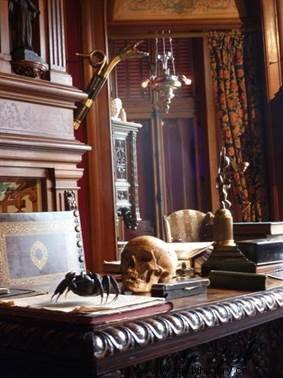
This work desk is, in our view, one of the pieces that best represents this eclecticism and this taste for accumulation that characterizes the end of the 19th century. Dutch clock in marquetry, Delft blue earthenware, articulated bronze crab from Japan, Russian church bassoon with serpentine head, night clock that can accommodate a small candle... In the middle of this office and pleasures where accumulate human knowledge and symbol of passing time, a human skull placed prominently on the desk completes this composition worthy of a 17th century Dutch Vanitas...
On this memento mori a sentence challenged the Bourbonnais scholar:“I was what you are, you will be what I am” . Testimony if necessary of the existential questioning of this man marked by a romantic century ending... Who knows if it is not in this face to face with Death that Louis Mantin made the decision to brave time by his exceptional legacy who was to offer him here below a form of immortality, vain but how comforting a complement to the immortality of the soul that this fervent Catholic hoped for.
After passing in front of the library, where Michelet disputes it with Zola, we pass in front of a collection of earthenware from Nevers, Moulins and Lunéville, placed opposite of a natural history collection where a small stuffed alligator finds himself surrounded by corals, shells, fish and other wonders of the depths. We also pay particular attention to the windows of the residence, which are also marked by very different styles, with medieval-inspired stained glass windows, holy figures worthy of the most beautiful churches in Bourbonnais, but also windows painted in an art style. new where we come across narcissus and poppies that respond to the sunflowers of the hangings.
Upstairs are two very "royal" bedrooms. That of Louise Alaire is bathed in a candy atmosphere characterized by a Louis XV style, raspberry tones, a painted ceiling depicting the sky and medallions representing the cycle of the four seasons. Right next to it is Louis Mantin's bedroom with its double-glazed windows decorated with grisaille, its four-poster bed with hangings and, on the walls, so-called Cordoue leathers (actually made in Avignon) from the 18th century. knows no other example in Europe for a private habitat! The origin of these decorated leathers, generally intended for royal and princely residences, remains mysterious. The sheepskin is covered with yellow-varnished silver leaves, on which exotic, historical, mythological or allegorical scenes are painted.
On the same floor, the bathroom with its Japanese decorations shows the skilful will of the master of the place to combine technical progress and beauty. 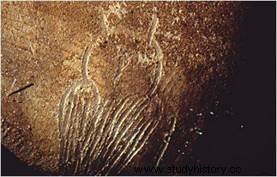 Finally, the top floor is reserved for the cabinet of curiosities, heated by an atypical fireplace inlaid with plates from the Compagnie des Indes, decorated with hunting still lifes in biscuit and adorned in its center with an intriguing fight between the Devil and a dragon all of them decked out for more realism with naturalistic elements (real raptor talons, rooster spur. ..). In this small private museum surrounded by stained glass windows, Louis Mantin had placed his collection of medals, showcases of archaeology, taxidermy, glassware, ironwork, cutlery, firearms (chest pistols, flintlocks, etc.). .), model of the double volute staircase of Chambord made according to Leonardo da Vinci's plans and many unusual objects such as these stuffed frogs represented in the middle of a sword duel!
Finally, the top floor is reserved for the cabinet of curiosities, heated by an atypical fireplace inlaid with plates from the Compagnie des Indes, decorated with hunting still lifes in biscuit and adorned in its center with an intriguing fight between the Devil and a dragon all of them decked out for more realism with naturalistic elements (real raptor talons, rooster spur. ..). In this small private museum surrounded by stained glass windows, Louis Mantin had placed his collection of medals, showcases of archaeology, taxidermy, glassware, ironwork, cutlery, firearms (chest pistols, flintlocks, etc.). .), model of the double volute staircase of Chambord made according to Leonardo da Vinci's plans and many unusual objects such as these stuffed frogs represented in the middle of a sword duel!
At the bottom, behind a door, a walkway allows us to access the top of the turret. There, on this high point of the building erected on the ashes of the ducal palace, surrounded by the serpent which bites its tail, the Alpha and the Omega, a Latin quatrain comes to remind the enlightened amateur who visits these places that everything here below is doomed to disappear...
Parvula pars quondam ingentis atque superbi
nunc alium, se denim mirum, conficio
Limen:Tempus edax flamed me dirvit olim
quod hodie relevat, rursus diruerit.
I who was once a small part of a considerable and proud dwelling, here I am completing a strange dwelling:I was once destroyed by fire; what time, which devours everything, brings up today, tomorrow time will have destroyed again.
We end the visit with these words where Mantin himself puts his work into perspective. We have deliberately not mentioned all the treasures that make the interest and the pleasure that we take in visiting Maison Mantin. We leave it to our readers to discover them for themselves by following in the footsteps of a scholar of the past century.
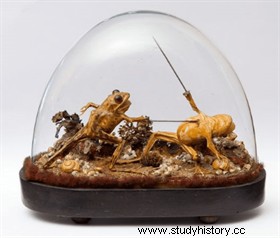
To see around...
Around the Maison Mantin, the town of Moulins offers several high places that deserve a stop. To begin with, adjoining the residence, the Anne de Beaujeu Museum. The latter includes an important collection of regional and national art and archaeological furniture. Also worth noting is the new room that has just opened, dedicated to Ancient Egyptian mummies. Currently, this room is completed upstairs by a temporary exhibition devoted to mummies and which presents embalming techniques and the relationship of Europeans to Egyptian civilization since Bonaparte's Egyptian campaign:wave of interest in the Egyptology, then Egyptomania ranging from porcelain ordered by the Emperor to cinema and playmobils from our toy departments.
Just opposite, the cathedral church contains one of the jewels of French Renaissance art:the famous 15th century triptych by the Master of Moulins, sometimes identified as being the Dutch painter Jean Hey.
Finally, note with interest the Musée de la Visitation presenting the monastic heritage of the Sisters of the Visitation Sainte-Marie, the Museum of Youth Illustration and the famous National Center for Stage Costume , enough to occupy a weekend in the region...
- Website of the Anne de Beaujeu Museum &Maison Mantin
- Website of the Moulins Tourist Office

